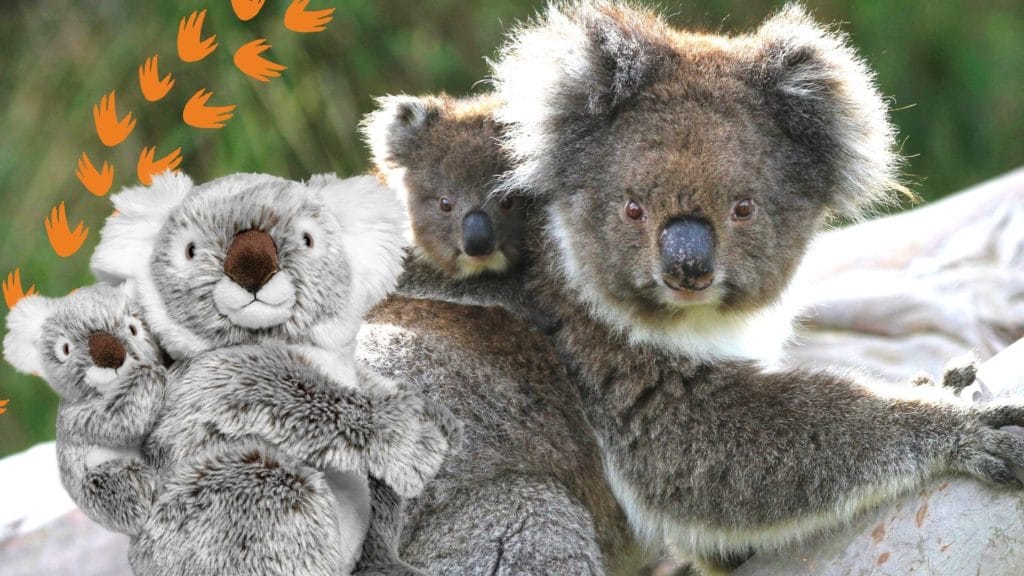Four new species to symbolically adopt—including our most peculiar yet!
Over the years, our collection of adoptable animals has become part of your holiday traditions. So, we put a great deal of thought into the new species we add to our WWF-Canada family. To recognize the outpouring of support from Canadians in response to the Australia wildfires, this year you’ll find a group of wildlife hailing from the land Down Under. Other species you can bring home include an international icon and one of the lesser known faces of wildlife loss in Canada.
This holiday season, give a gift that can change the world. Every symbolic adoption gift supports WWF-Canada’s efforts to reverse the decline of wildlife and protect the beautiful and diverse places they call home.
Here they are, the newest members of our adoptable WWF-Canada family:

Platypus
It’s hard to imagine a species more peculiar than the platypus. In fact, this freshwater species — with the bill and webbed feet of a duck, thick insulated fur of an otter and paddlelike tail of a beaver — is so odd that the first scientists to examine it thought it was a hoax.
Habitat: The platypus is a small amphibious mammal found only in Australia. They rely on freshwater bodies where they burrow in the banks and forage for food.
Diet: This carnivore primarily feeds on bottom-dwelling invertebrates, crustaceans and worms.
Did you know: The platypus is one of only two mammals in the world that lay eggs.
Threats: Platypus populations are threatened by habitat loss and bycatch, which is when species are caught unintentionally by fisheries.

Red kangaroo
Meet Australia’s own Big Foot, the red kangaroo. Macropod, which literally means big foot, is a marsupial family unique to Australia and New Guinea that includes kangaroos, wallabies and pademelons. Kangaroos are the only large animals to use hopping as a means of movement, travelling up to 70 km/h over short distances.
Habitat: They live in small groups call mobs throughout central Australia in deserts and open grasslands.
Diet: Red kangaroos are herbivores and primarily eat grasses, leaves and sedges.
Did you know: Infant kangaroos, or joeys, stay in their mother’s pouch for two months and permanently leave the pouch at around 235 days old.
Threats: Red kangaroos are threatened by habitat loss, introduced predators such as wild dogs and foxes and climate change.

Collared pika
These tiny creatures get their name for the pale patches on their nape and shoulders, which form a partial collar. But don’t let its cuddly appearance fool you, the collared pika is one of North America’s toughest animals. Though living in colonies, collared pikas give distinct calls to define boundaries between their den and their neighbours’ — and they will fight off intruders.
Habitat: The collared pika is found in mountainous areas, commonly inhabiting boulder fields above tree lines in the Yukon, Northwest Territories and northern British Columbia.
Diet: These tiny herbivores rely on grasses, weeds and tall wildflowers. food.
Threats: Collared pikas are threatened by climate change and are designated as Special Concern under Canada’s Species at Risk Act. Your symbolic adoption is supporting efforts to reverse the decline of Canada’s diverse wildlife.

Ring-tailed lemur
Named for the alternating black and white bands adorning its long, furry tail, the ring-tailed lemur is probably the most well-known of Madagascar’s 101 (!) lemur species — and the best at relaxing. Unlike other lemurs that spend most of their time in trees, troops of ring-tailed lemurs can often be found sunbathing on the forest floor in a ‘yoga’ position.
Habitat: These unique primates are found only on the African island of Madagascar.
Diet: Ring-tailed lemurs are herbivores. Their diet consists mainly of fruit but also some leaves, seeds and the occasional insect.
Did you know: Male ring-tailed lemurs literally stink at flirting. They have powerful scent glands and rub their unique odor along their tails to woo a mate.
Threats: The ring-tailed lemur is designated as Endangered under the IUCN Red List of Threatened Species and is threatened by hunting, domestication and habitat loss.

Koala family
Although found only in Australia, this marsupial is beloved around the world. But the country’s devastating 2019-2020 bushfire season, which saw an estimated three billion animals killed or displaced, was a blow to this already at-risk species. To show our love, we’ve brought back the endearing koala adoption — now available for the first time as a family with a mother and joey. As with other marsupials, joeys are blind, hairless and tiny at birth. They crawl into their mother’s pouch where they stay for the next six months.
Diet: Koalas spend their lives feasting on leaves from eucalyptus trees and sleeping while they digest them.
Habitat: Koalas inhabit eucalyptus forests of eastern and southeastern Australia.
Did you know: The koala has distinctive fingerprints, just like humans.
Threats: Like many species, koalas are vulnerable to habitat loss. Climate change is also leading to more frequent and intense flooding, droughts and wildfires that impact the places wildlife live.

